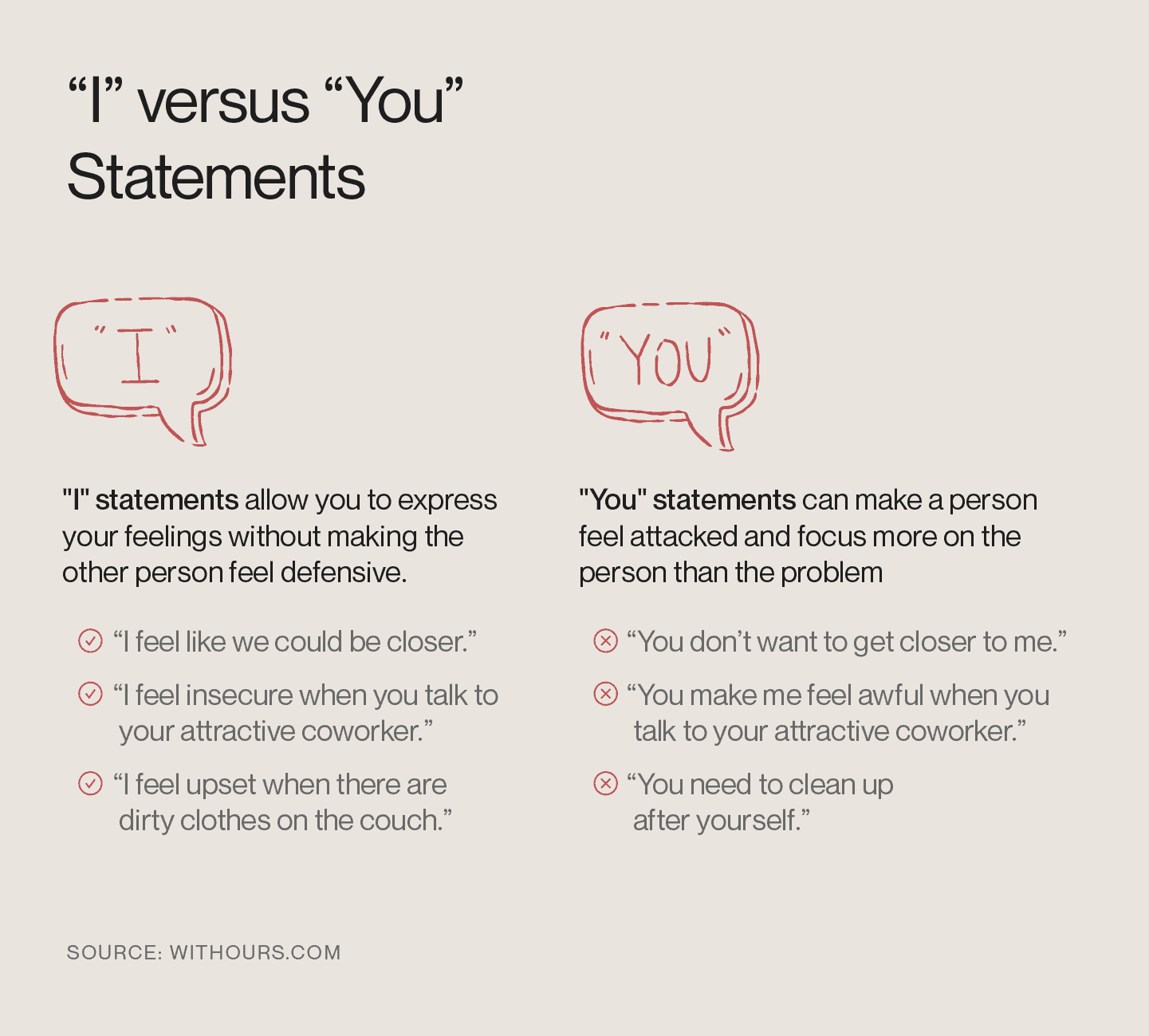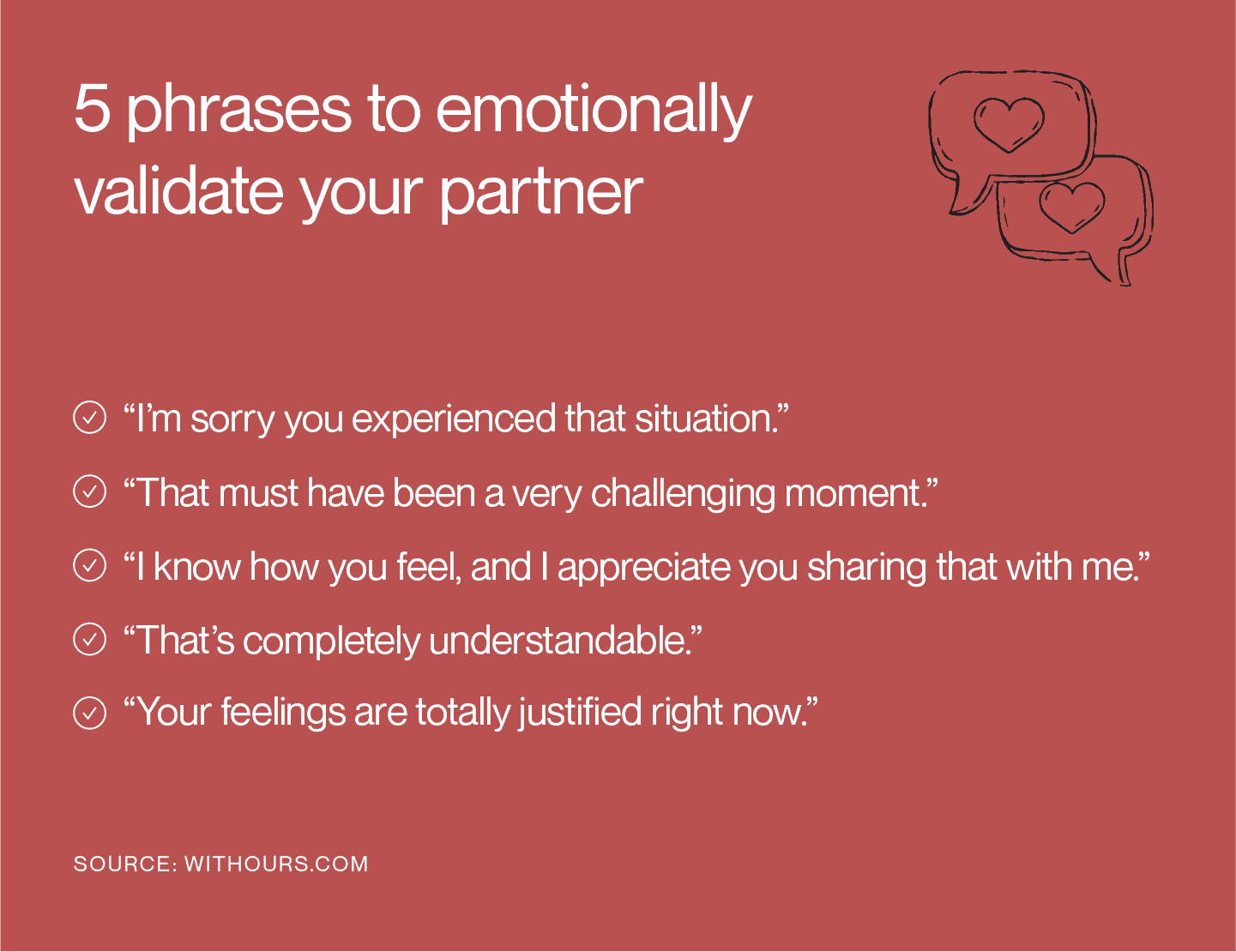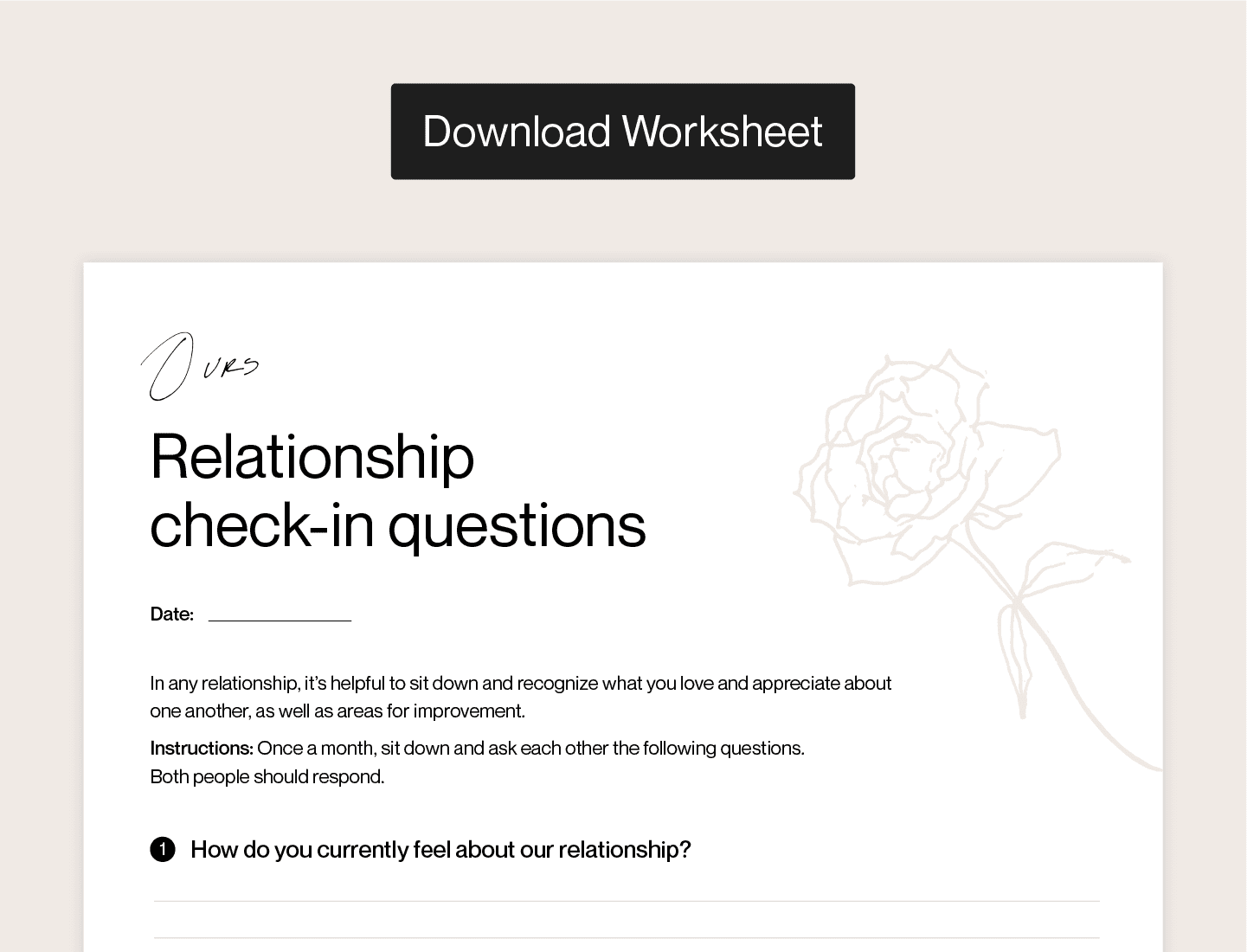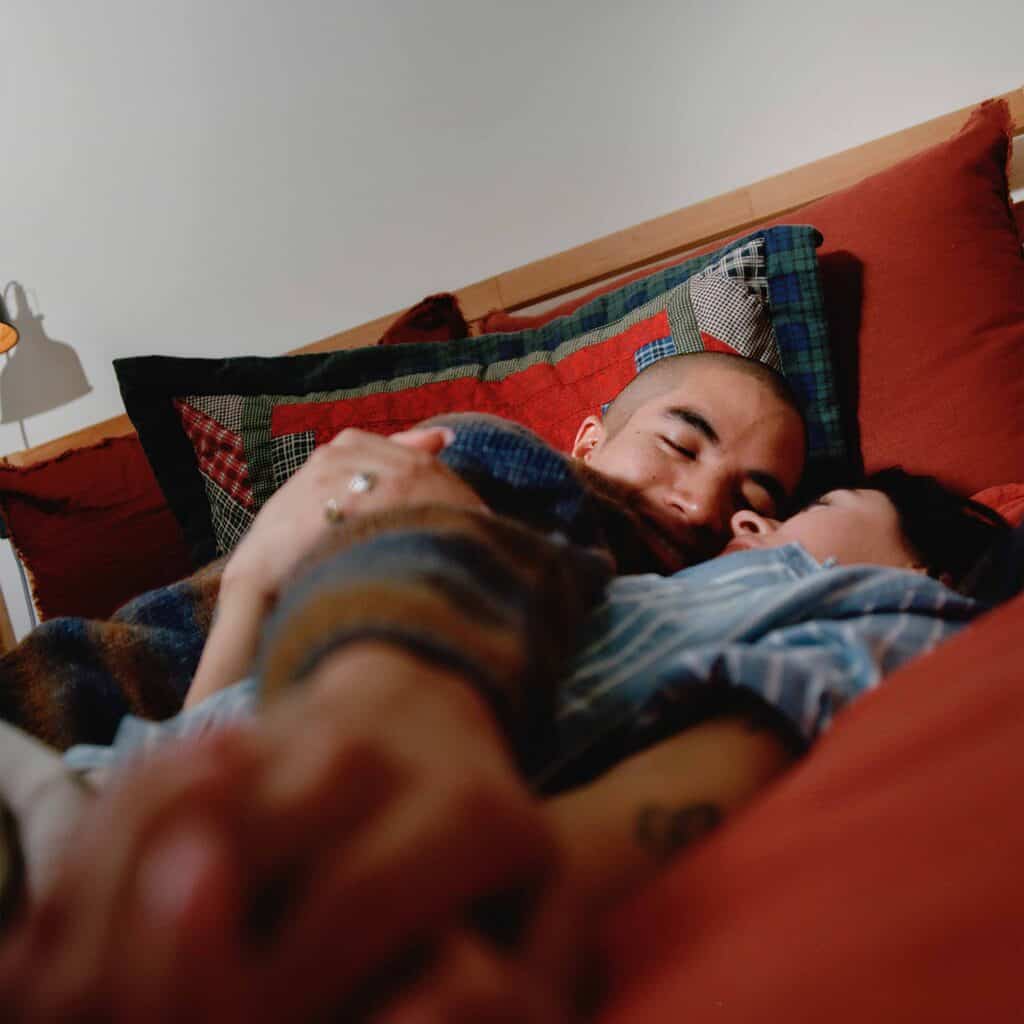Relationship wellness
20 at-home communication exercises for couples

contents
Regularly implementing communication exercises for couples can build intimacy and trust. Learn how to effectively practice these exercises at home.
Communication is vital to every relationship in our lives, and it’s a skill that we can improve with practice. We’ve gathered 20 communication exercises for couples that offer ideas for settling disputes, sharing personal experiences, and building trust with your partner.
Couples who regularly practice even a few of these exercises can improve their ability to solve problems together and deepen their understanding of each other. You can practice most of these exercises at home.
1. Active listening exercises to enhance empathy
There’s a difference between someone hearing you and listening to you. Active listening exercises can help couples understand this distinction and improve their rapport through patience and empathy.
Relationship statistics in 2024 suggest that 71% of people wish they knew how to discuss big topics and conflicts. This exercise can help couples practice listening to each other’s needs in a safe and respectful way.
Here’s an example of this exercise at play:
- Step 1: Set a timer for 3 to 5 minutes.
- Step 2: Let one partner speak without interruption, then the other partner speaks.
- Sep 3: The listener affirms the speaker’s feelings with verbal and nonverbal feedback. Statements like “I hear you” and maintaining eye contact are especially effective.
2. Couples journaling to gain new perspectives
Journaling offers an outlet for some of our most complex ideas and emotions. Couples journaling can be a fantastic way to explore thoughts that might be hard to verbalize.
This exercise is very open-ended; you can leave questions for your partner that they can respond to later (e.g., “How was your day?” or “What’s something you’ve been thinking about recently?”), they can create lists of activities they’d like to try with you, and you both can even use drawings and doodles to convey feelings.
3. Eye contact exercises to deepen mutual understanding
Holding eye contact while speaking with someone increases intimacy, displays respect, and conveys emotions without saying a word. This exercise calls for couples to look into each other’s eyes to deepen their understanding of one another.
Here’s an example of this exercise:
- Step 1: You and your partner find a quiet, calm, and private space.
- Step 2: Both of you look into each other’s eyes for 5 minutes without breaking. line of sight
- Step 3: Discuss any thoughts or feelings that surfaced in this interval.
4. Gratitude exercises to highlight appreciation
Gratitude is all about appreciating the here and now, warts and all. Giving thanks for the people, things, and ideas in your life can lead to feelings of contentment long term.
Try this exercise with your partner:
- Step 1: Get a pen and paper for both partners.
- Step 2: Write down three things about your partner or experiences you’ve shared with them that you’re grateful for.
- Step 3: Exchange papers and discuss the notes you’ve both written down.
5. Use “I” statements over “You” statements
The old adage “address the problem, not the person” holds true when it comes to disagreements between partners. Using “I” statements emphasizes your feelings about a situation and can help prevent anyone from feeling attacked when dealing with conflicts.
For instance, instead of saying, “You make me angry when you don’t listen to what I have to say,” you can try something like, “I feel like my words aren’t being heard.”

6. Gottman exercises to boost conflict resolution
In the 1970s, Dr. John Gottman pioneered the Gottman Method of couples therapy to help resolve conflicts and strengthen relationships with a more structured approach.
The “Sound Relationship House” is integral to the Gottman Method. It encourages couples to focus on a set list of principles that address the positive and negative aspects of their relationships.
Here’s what a Gottman Exercise could look like:
- Step 1: Create a “Love Map” of your partner’s likes, dislikes, past, hopes, and key features.
- Step 2: Manage conflicts when issues arise.
- Step 3: Prioritize “Shared Meaning” by seeking to understand each other’s inner worlds.
7. Music sharing exercises to build intimacy
Sharing things that you love with another person can build intimacy and understanding on a deep level. When you share music with your partner, you’re also being vulnerable with them and letting them into your inner world.
Try doing this with your significant other:
- Step 1: Share a song or even a playlist with your partner.
- Step 2: Listen to any songs, albums, or mixes your partner shares with you.
- Step 3: Discuss the emotional significance of the selections you’ve both shared.
8. Extended cuddling exercises to increase security
Cuddling creates feelings of security and intimacy for both partners. This exercise aims to grant more time for bonding and understanding.
Example of a cuddling exercise:
- Step 1: Hug each other in a private space for an extended period.
- Step 2: Discuss any feelings that arise during this time.
9. Sandwich method exercises to address criticism
Discussing points of contention can be challenging in marriage counseling, especially if we highlight the negatives and exclude the positives. The Sandwich Method of communication encourages us to use compliments and praise in tandem with our critiques.
5:1 is the golden ratio for this exercise; for every negative thought, you need to express, balance or “sandwich” it between five positive comments.
Here’s an example of the Sandwich method:
- Step 1: Think of a request that you’d like to make of your partner.
- Step 2: Now, consider 5 of your partner’s positive traits.
- Step 3: Sandwich your request in between two to five compliments; “You’re a great listener, but you occasionally cut me off. Thank you for hearing me out.”
10. Validation exercises to help your partner feel understood
When someone shares something with us in confidence, we can use intentional language to validate their feelings and show that we truly care about them.
Validating language is contextual and specific; rather than saying “umm hmm” when someone shares a personal experience with you, this exercise encourages thoughtful and meaningful responses.
Validation exercises can look like the following example:
- Step 1: One partner discusses several things that have been on their mind for three to five minutes.
- Step 2: When listening, respond with whole statements like “I’m sorry you experienced that” and “I hear you.”

11. Problem-solving exercises to promote cooperation
Working together to solve challenges is ultimately what a relationship is all about. Completing puzzles with your partner can bring you closer and shed light on how you both see the world.
Here’s an example:
- Step 1: Gather a collection of brain teasers and mental puzzles.
- Step 2: Discuss potential strategies for each problem before attempting a solution.
- Step 3: Try each idea that you and your partner conceive until the puzzle is solved. Once you find a solution, ask your partner how they came up with it.
12. Imago relationship exercises to reframe childhood beliefs
Imago Relationship Therapy, pioneered by Dr. Harville Hendrix and Helen LaKelley Hunt, aims to improve relationships by addressing the “unconscious image of familiar love” we all develop as children.
This is one of the types of couples therapy that seeks to improve communication between couples by resolving long-standing beliefs and misconceptions that we conceived as children.
An Imago exercise might look like:
- Step 1: Examine 5 to 10 of your behaviors or thought patterns that have created tension between you and your partner.
- Step 2: Note if and how these behaviors might relate to challenges or thoughts you had as a child.
13. The “Lend Me a Hand” exercise to reinforce trust
Cooperation is key to every successful relationship, and this exercise illustrates that point in an incredibly fun and lighthearted way. Here, both couples will tie or simply hold one hand behind their back.
You’ll then need to communicate and work together to complete tasks that we normally handle alone. Even something as simple as washing dishes gains brand new meaning when another person has to act as your literal other half.
14. Ask open-ended questions to gain greater awareness of your partner
Open-ended questions increase your rapport with someone brand new as well as someone you’ve known for years. Closed questions invite “yes” or “no” answers and are quantitative in nature; “Would you like to go out tonight?” and “Do you like me” are examples.
On the other hand, open-ended questions invite broad and qualitative answers; “How did you feel when you didn’t get that promotion?” and “What’s something you’re really looking forward to this week?”

15. Nonverbal communication exercises to heighten
Learning how to communicate without saying anything is a valuable part of learning how to have intentional relationships. After all, we transmit so much information with facial expressions, body language, and the words we don’t share with others.
A surprising number of children’s games double as fantastic nonverbal exercises.
Several examples include:
- Idea 1: Play a game of charades, which encourages people to study movements and gestures.
- Idea 2: Mirror each other’s movements. Try to be as accurate as possible.
- Idea 3: Make facial expressions and ask your partner to identify each one. Note if they misinterpret an expression.
16. The “40-20-40” exercise to promote equanimity
This unique method of couples communication calls for a structured approach to everyday discussions. With 40-20-40 exercises, couples can create a space where both parties have an equal amount of time to talk and listen to one another.
Here’s an example:
- Step 1: Set aside 10 minutes of time with your partner.
- Step 2: Set 40% of that time to let one person speak, then 40% for the other speaker.
- Step 3: Set the last 20% of time for both partners to discuss the relationship in general.
17. Schedule relationship check-Ins
Understanding how your partner feels about your relationship can improve communication in many unexpected ways. At least once a month, you and your partner can set time aside to simply see how the other person is feeling.
Depending on how you both feel, you can increase the frequency of these check-ins to weekly or bi-weekly. Check-ins can be simple, informal conversations, or they can be more structured and incorporate journaling.

18. The “Three and Three” exercise
This exercise calls for couples to safely share three things that they love about each other and three things that could be better. It’s not uncommon to encounter an exercise like this in premarital counseling.
Here is what the Three and Three exercise can look like:
- Step 1: Write down three positive and three negative things about each other.
- Step 2: Address the points and ask questions about each of them.
19. Trust and listen exercises to display reliability
This exercise aims to improve trust and foster reliance between couples in a fun way. Here, one partner will create a field of imaginary traps that only they can see. The other partner will then try to navigate around these imaginary traps.
Here’s the catch: The partner who sets the traps has to give hints or instructions to the other partner. For an added challenge, you can close your eyes or wear a blindfold as you try to traverse your partner’s traps.
20. Mirroring exercises to improve comprehension
Here, this exercise calls for couples to repeat what they heard their partner say. This can highlight simple misunderstandings that can occur during conversions. It’s important for both partners to understand that clarity is the goal here.
If someone repeats an incorrect statement, the idea is to find out why this misunderstanding occurred and give the benefit of the doubt that it’s not occurring on purpose.
Here’s how a Mirroring Exercise might work:
- Step 1: One partner expresses a thought without interruption.
- Step 2: The other partner says, “I heard you say …” and then repeats the thought based on their own interpretation.
- Step 3: Both partners discuss any differences between what was said and what was heard.
Find tailor-made couples therapy services with Ours
The communication exercises we’ve shared can help on a general level, and many of them serve as previews for the work that occurs in couples therapy. If you’d like to explore a more personalized approach to couples’ therapy, visit the Ours sign-up page to learn more.










